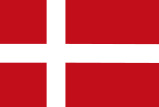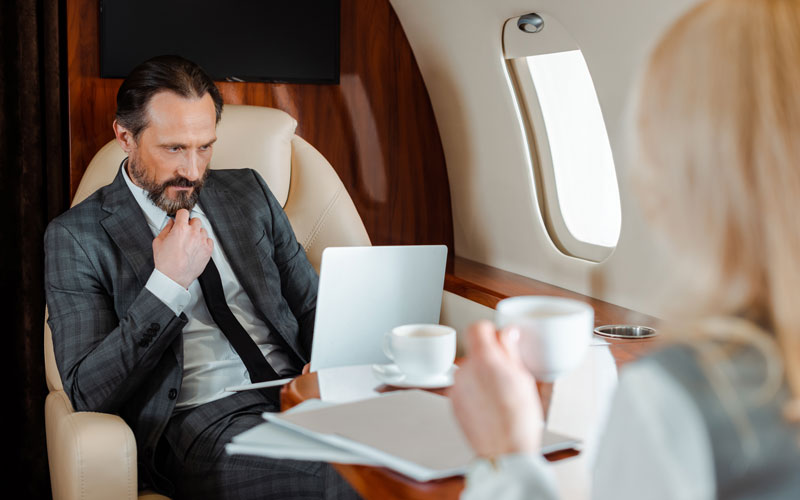COMMERCIAL AND CORPORATE FLYING WITHIN THE EUROPEAN UNION
Short & sweet no. 17
What is the correct use of a corporate aircraft?
Added 2023 – Updated January 2024

-
Do not fall into the wrong use-trap
-
Can you be less than 100% EU compliant?
-
What are the most frequent surprises for EU outsiders?
-
Full importation into the EU equals an obligation to be EU compliant on all worldwide flights
 +
+ 
-
The message that your CFO will not appreciate
 We are frequently asked about the correct definition of business use. In this context, the term covers how an aircraft must be utilized correctly by a company for business purposes in cases where the aircraft has been fully imported into the EU. In this article, we dive a bit deeper into this topic, look at different use-scenarios, and discuss how to verify whether these can be defined as ‘correct use’.
We are frequently asked about the correct definition of business use. In this context, the term covers how an aircraft must be utilized correctly by a company for business purposes in cases where the aircraft has been fully imported into the EU. In this article, we dive a bit deeper into this topic, look at different use-scenarios, and discuss how to verify whether these can be defined as ‘correct use’.
The customs aspect of flying within the EU
Any aircraft flying into the EU will operate under customs control using either the Temporary Admission procedure (TA) or full importation (FI). There are no other options. The TA procedure can only be used by EU outsiders where the aircraft is owned (including any UBOs), operated, registered, and based outside the EU, leaving EU insiders only one option: full importation. EU outsiders can, of course, choose to use full importation instead of TA if they find it beneficial.
The big surprise for EU outsiders
The problem always seems to surround how to handle any non-business use correctly. Here, many EU outsiders using full importation are often surprised and worried by the fact that the demand for correct usage of their fully EU-imported corporate aircraft is not only based on flights performed within the EU but includes all flights worldwide. Even non-business flights flown outside the EU will be considered non-compliant if tested by an EU VAT audit if the compensation methods for non-business use are not correctly applied according to EU regulations.
Can you be less than 100% EU compliant?
The answer is no. Any non-compliance with the EU regulations will most likely activate a direct payment of the VAT (17-27%) and customs duty (2.7%) for the owner or operator. The amount is based on the current value of the aircraft, taking into consideration the extent of ‘wrong use’. A 60% wrong usage will typically mean that 60% of the calculated import VAT must be paid back.
The different scenarios
The aircraft must be utilized 100% by the importing entity for business purposes in the pursuit of correct economic activities as defined1 by the EU Commission. We have listed different scenarios to visualize the correct understanding of business use to be fully compliant with the preconditions when using full importation.
Scenario 1
The importing entity only uses the aircraft for flying with employees and board members to support activities related to the importing entity’s business.
Scenario 2
The aircraft is partly used without proper payment2 by the UBO and other executives for personal, recreational, or amusement travel.
Scenario 3
The UBO uses the aircraft for business activities unrelated to the importing entity without paying the importing entity a market rate payment for the trips.
Scenario 4
The aircraft is used for holiday trips by the families of senior executives without proper payment.
Correct useScenario 5
The importing entity is acting as a lessor, and all leases – typically a dry lease covering the total usage of the aircraft – will be based on market rates and arm’s length prices and principles.
Correct use
Scenario 6
The importing entity acts as a corporate flight department, selling transportation services to group companies at a market rate and with a profit.
Full EU importation = obligation to be EU VAT compliant on all worldwide flights ![]() +
+ ![]()
The demand to factor in worldwide usage during an audit is universal and acknowledged by judgments, supported by legal opinions from various EU member states, including Denmark and the Netherlands. The setup of the aircraft must be fully compliant with EU regulations even though the home base and majority of all flights are flown outside the EU, e.g., North America, the Middle East, Asia, etc. Many jurisdictions have other compensation methods for non-business use that are incompatible with EU regulations. Therefore, a multi-jurisdiction operation is often difficult, yet it is not a mitigating circumstance that the aircraft is operated and fully imported in more than one jurisdiction.
IMPORTANT!
Various exotic papers scandals have shown that the risk of extensive audits is very costly. The Paradise Papers, mentioning Isle of Man importations, have shown that operators can be heavily hit if an aircraft with a full importation is not used correctly after the importation.
We have said it before: It sounds absurd, but there is no way around it
The only thing that matters is that the importing entity uses the aircraft 100% correctly worldwide according to the EU VAT regulations. We know that this consequence of a full EU importation might sound absurd for many EU outsiders, especially if they have opted for a full importation to achieve the EU free circulation status, have a completely non-EU operating structure, or are domiciled, e.g., in the US. We have previously seen that many US operators fully focus on staying compliant with FAA and IRS rules and do not consider other jurisdictions, which can pose unforeseen consequences for the operator and unpleasant surprises when choosing the full importation method.
THE MESSAGE THAT YOUR CFO WILL NOT APPRECIATE
“Dear CFO,
We recently imported our corporate aircraft into the EU but have realized that we are now obliged to follow the EU regulations on how to handle compensations for non-business use worldwide. This means we might have to skip our home base FAA and IRS compliance if we also want to comply with the EU regulations, as the compensation methods are not 100% compatible. This could pose major problems for our operations. I hope you know how to handle it.
Conclusion
If compliance issues following a full importation are incompatible and unmanageable, or the liability too big a risk, all EU outsiders have the option to choose the TA procedure, where non-business use is unrestricted, thus not an issue. Therefore, we always recommend that EU outsiders use the TA procedure whenever possible, as the consequences mentioned above only relate to the full importation method.
Important things to know about full importation
Operators should be aware that full importation includes a potential VAT and tax liability, requires onwards continuous correct worldwide economic activity as well as correct handling of any potential worldwide non-business use and or non-commercial use; requirements that the TA procedure does not have. The statute of limitations is five years for full importation, and the use of the aircraft must worldwide stay fully compliant with current EU regulations until the end of this period.
How can we help?
If you have questions about the above, please do not hesitate to contact us.
1) some business activities are not subject to VAT, such as selected real estate activities, banking and finance, insurance, gaming, and holding companies, etc. The listing is not complete. These activities will therefore not be seen as correct economic activities in this context.
2) all non-business flights without payment are not allowed. A market rate compensation must be paid to the importing entity.
List of all OPMAS
Short & Sweet mails:
No. 23 – Temporary Admission is supposed to be paperless, so why is documentation needed?
Oct 2024 TA
No. 22 – What does it take to be compliant?
Jun 2024 TA FI
No. 21 – Part 4: Using Temporary Admission – how to prepare for a customs ramp check
Jan 2024 TA
No. 20 – Buying or selling aircraft within, to, or from the EU
Nov 2023 TA FI
No. 19 – The real differences between full importation and Temporary Admission
Sep 2023 - Updated 2024 TA FI
No. 18 – Exporting an aircraft from the EU
Jun 2023 - Updated 2024 FI
No. 17 – What is the correct use of a corporate aircraft?
Mar 2023 - Updated 2024 FI
No. 16 – Which customs procedures can be used for parking an aircraft within the EU?
Jan 2023 - Updated 2024 TA FI
No. 15 – Liability and risk elements associated with EU importation and admission
Oct 2022 - Updated 2024 TA FI
No. 14 – Part 3: Using Temporary Admission – when does an operator need help?
Aug 2022 – Updated 2024 TA
No. 13 – Importation impacts when traveling the world in corporate aircraft
Jun 2022 - Updated 2024 FI
No. 12 – How to get the 0% airline VAT exemption meant for commercial operators
May 2022 - Updated 2024 FI
No. 11 – Part 2: Using Temporary Admission
– what do customs look for during a ramp check, and why?
Mar 2022 – Updated 2024 TA
No. 10 – How to handle aircraft maintenance correct in a customs context
Feb 2022 - Updated 2024 TA FI
No. 9 – Part 1: Using Temporary Admission – the Supporting Document
Dec 2021 – Updated 2024 TA
No. 8 – Do not fall into the operator trap when flying within the EU and UK
Oct 2021 - Updated 2024 TA FI
No. 7 – Which offshore aircraft registrations can be used with Temporary Admissions when flying within the EU and UK?
Sep 2021 - Updated 2024 TA
No. 6 – Flying with EU-resident persons onboard when using Temporary Admission
Aug 2021 - Updated 2024 TA
No. 5 – What about private use
of corporate aircraft?
May 2021 - Updated 2024 TA FI
No. 4 – What does ‘VAT paid’ mean?
Mar 2021 - Updated 2024 FI
No. 3 – Is a full importation needed
in both the UK and the EU27?
Mar 2021 - Updated 2024 FI
No. 2 – Flying commercially
within the EU
Feb 2021 - Updated 2024 TA FI
No. 1 – Flying with the
CEO
Nov 2020 - Updated 2024 TA FI
